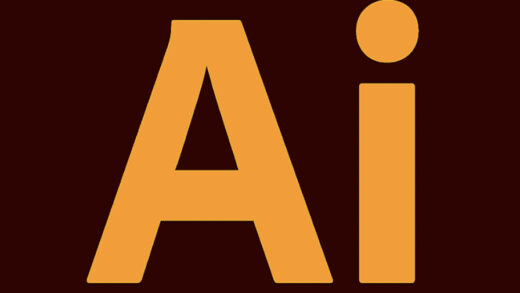For passionate graphic designers, turning creativity into a lucrative career is a dream come true. Embracing the freelance lifestyle allows you to unleash your artistic brilliance while reaping the financial rewards of your skills.
In this comprehensive guide, we delve into the strategies and opportunities that can lead to financial success in graphic design.
From earning from the comfort of your home to discovering the highest-paying design niches, get ready to unlock the secrets of making money as a graphic designer in 2023 and beyond.
How Can I Earn Graphic Design at Home?
The digital era has opened doors for graphic designers to earn from the comfort of their homes. Let’s explore some effective ways to make money in graphic design without leaving your sanctuary.
Freelancing Platforms
Embrace the world of freelance graphic design by joining reputable platforms like Upwork, Fiverr, and Freelancer. Create an impressive portfolio, showcase your skills, and bid on projects that align with your expertise to attract clients from around the globe.
Online Design Marketplaces
Leverage online design marketplaces like Creative Market and Envato to sell your digital design assets. From fonts and illustrations to templates and mockups, these platforms offer a passive income stream as your creations are available for purchase 24/7.
Design Contests
Participate in design contests on websites like 99designs and DesignCrowd to showcase your talent and potentially win cash prizes. These contests offer exposure to a wide audience and can lead to long-term client relationships.
What Type of Graphic Design Pays the Most?
Certain design niches are known to be more lucrative than others. Let’s explore the high-paying design specializations that can significantly boost your earnings.
- Branding and Identity Design
Help businesses establish their brand identity through logo design, brand guidelines, and corporate collateral. Branding projects often command higher fees due to their critical role in creating a strong brand image;
- UX/UI Design
User experience (UX) and user interface (UI) design are in high demand as businesses strive to create seamless and user-friendly digital experiences. These projects often offer substantial compensation for skilled designers;
- Web Development and E-commerce Design
Web developers with a flair for design can earn handsomely by creating visually appealing and functional websites for businesses and online stores. E-commerce design projects, in particular, can be financially rewarding due to their complexity.
How to Make Money as a Graphic Designer in 2023?

As the design landscape evolves, staying ahead of the curve is crucial for sustained financial success. Let’s explore some strategies to thrive as a graphic designer in 2023 and beyond.
- Expand Your Skill Set. Constantly learn and acquire new design skills, such as motion graphics, 3D modeling, and augmented reality design. A diverse skill set allows you to cater to a wider range of clients and opens doors to innovative projects;
- Build a Strong Online Presence. Create a professional website, maintain an active presence on social media, and engage with your target audience through insightful content and design tips. A strong online presence helps attract potential clients and establishes you as an industry expert;
- Network and Collaborate. Build meaningful connections with other designers, creative professionals, and potential clients. Collaborating on projects or referring clients to one another can lead to a steady stream of opportunities and referrals.
FAQ for Beginners in Graphic Design
Formal education can be beneficial, but it’s not a strict requirement. Many successful graphic designers are self-taught or have learned through online tutorials and courses. Building a strong portfolio and continuously improving your skills is essential, regardless of your educational background.
Adobe Creative Suite is the industry standard and includes popular software like Adobe Photoshop, Illustrator, and InDesign. Learning these tools will give you a competitive edge in the graphic design field. Additionally, consider exploring other software like Sketch and Affinity Designer, which are gaining popularity.
Practice is key to improving your design skills. Work on personal projects, take on freelance gigs, and participate in design challenges. Seek feedback from other designers, attend workshops, and never stop learning. The more you design, the better you’ll become.
Start by including your best work in your portfolio, showcasing a variety of design projects that highlight your strengths. Keep your portfolio updated and organized, and tailor it to the type of clients or jobs you want to attract. Quality over quantity is essential; choose your best work rather than filling it with mediocre pieces.
Pricing can be challenging for beginners. Research industry rates and consider factors such as the complexity of the project, your level of expertise, and the client’s budget. Be transparent about your pricing and the services you offer.
Utilize online platforms like Upwork, Fiverr, and Freelancer to find freelance opportunities. Create a professional profile, showcase your portfolio, and actively bid on relevant projects. Networking and word-of-mouth referrals can also lead to freelance gigs.
Understanding design principles is crucial. Some key principles include:
1. Balance. Achieving visual balance in your design by distributing elements effectively.
2. Hierarchy. Organizing elements to guide the viewer’s eye and prioritize information.
3. Contrast. Using contrasting elements to create emphasis and visual interest.
4. Typography. Choosing appropriate fonts and using them consistently for readability.
5. Color Theory. Understanding the psychology of colors and using them strategically to evoke emotions.
Staying inspired is essential for any creative pursuit. Explore design blogs, follow design influencers on social media, attend design events, and engage in hobbies outside of design. Creative blocks are normal; take breaks, sketch ideas, and seek inspiration from various sources.
Both options have their merits. Specializing in a niche can help you become an expert and attract clients seeking specific skills. On the other hand, being a generalist allows you to work on a wide range of projects. Consider your interests and career goals when making this decision.
Feedback is essential for growth, so embrace it with an open mind. Learn to separate personal feelings from your work and use constructive criticism to improve. Be receptive to client feedback, and don’t be afraid to ask for clarification if needed.
Conclusion
Embarking on a career in graphic design may seem daunting for beginners, but with passion, dedication, and a willingness to learn, you can achieve success. Continuously improve your skills, build a strong portfolio, and explore various opportunities in the field.
As you navigate your path in graphic design, remember that creativity is a journey, and every step you take contributes to your growth as a designer. Embrace the challenges, stay curious, and never stop exploring the vast possibilities that the world of graphic design has to offer.




